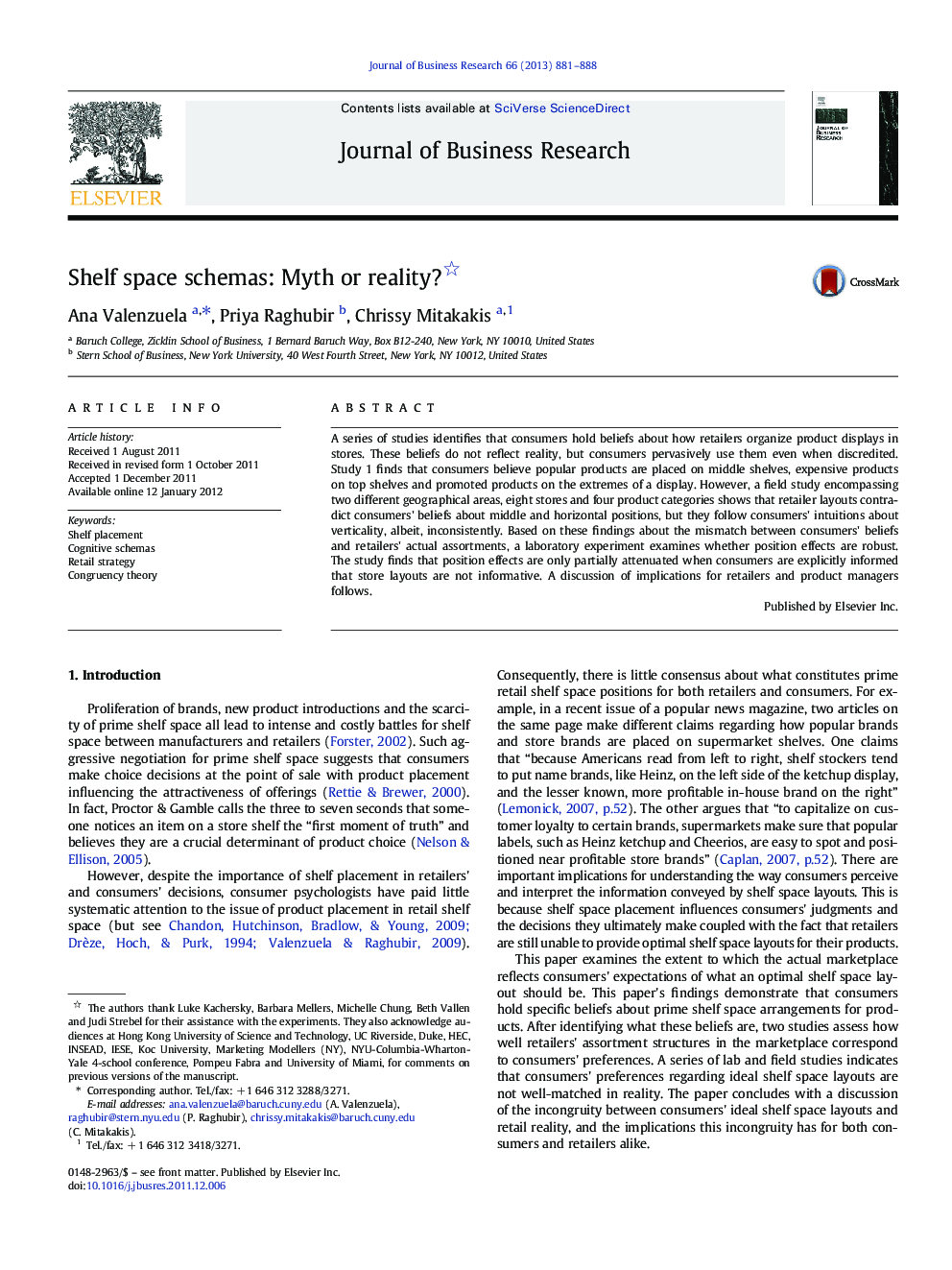| Article ID | Journal | Published Year | Pages | File Type |
|---|---|---|---|---|
| 1017867 | Journal of Business Research | 2013 | 8 Pages |
A series of studies identifies that consumers hold beliefs about how retailers organize product displays in stores. These beliefs do not reflect reality, but consumers pervasively use them even when discredited. Study 1 finds that consumers believe popular products are placed on middle shelves, expensive products on top shelves and promoted products on the extremes of a display. However, a field study encompassing two different geographical areas, eight stores and four product categories shows that retailer layouts contradict consumers' beliefs about middle and horizontal positions, but they follow consumers' intuitions about verticality, albeit, inconsistently. Based on these findings about the mismatch between consumers' beliefs and retailers' actual assortments, a laboratory experiment examines whether position effects are robust. The study finds that position effects are only partially attenuated when consumers are explicitly informed that store layouts are not informative. A discussion of implications for retailers and product managers follows.
